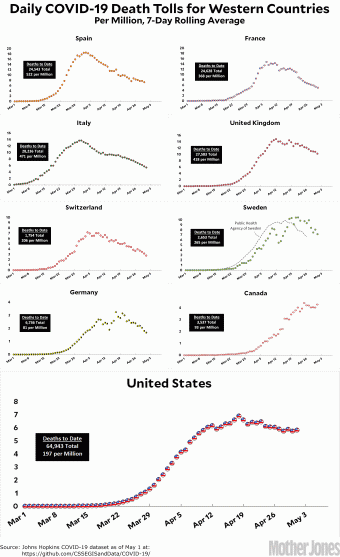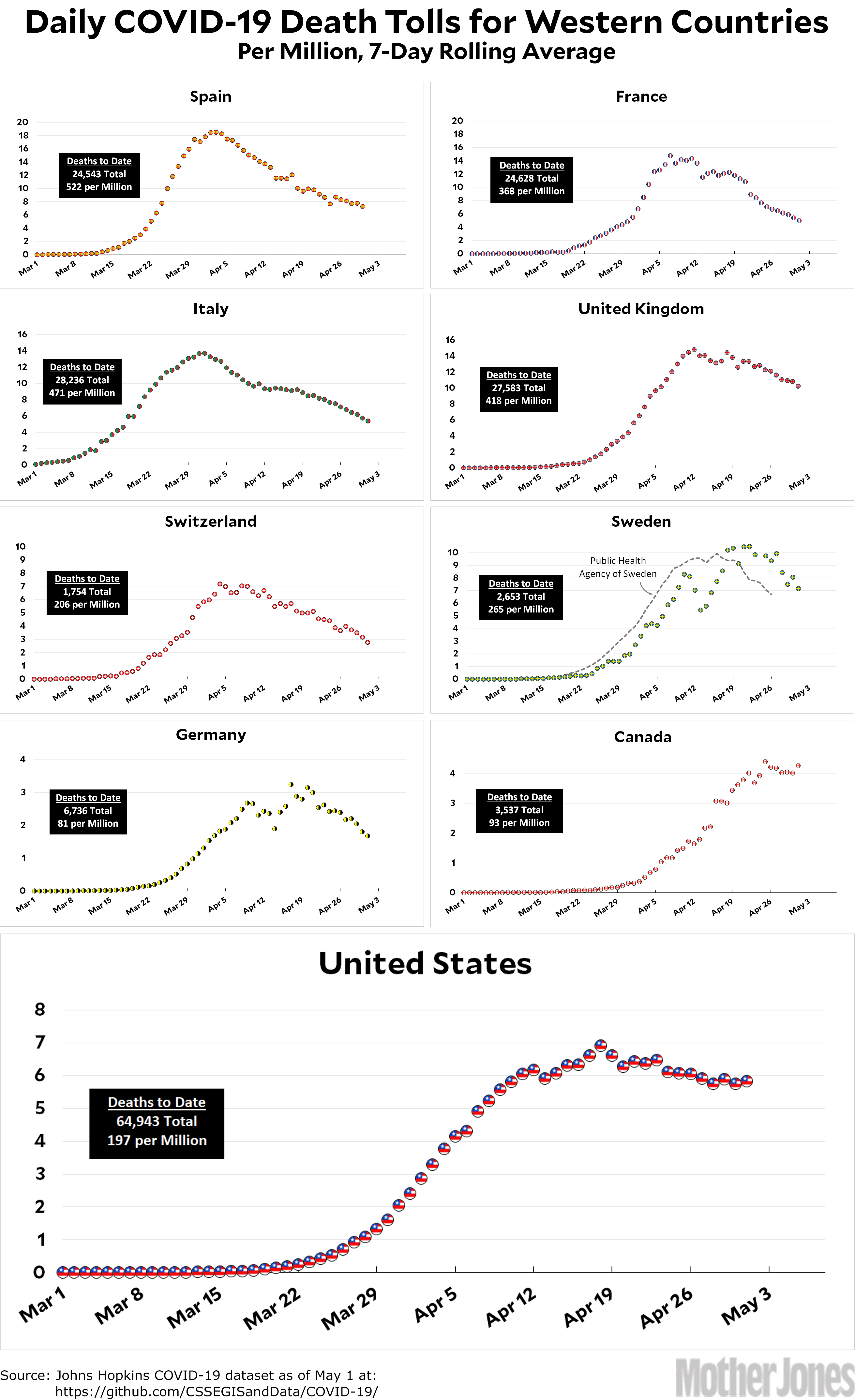
Here’s the coronavirus death toll through May 1. For some reason there was no update on Friday for Spain, so its chart goes only through April 30.
I have a feeling my comments on these posts are going to start getting repetitive. The basic story is that nearly all the countries are continuing to show steady declines, and as the days go by they look better and better. There are two exceptions. The first is Canada, which may or may not have peaked, but certainly isn’t going down. Their absolute numbers are still quite low, but this should make it all the easier to put in place test-and-trace programs to stamp out what little they have. So why isn’t this happening?
The second, of course, is the United States. We are declining, but it’s a slow, weak decline. In the last 14 days we’ve dropped from about 2,400 deaths per day to 2,000 deaths per day. If we keep up this rate, we won’t hit zero until mid-July after 85,000 more deaths, for a total official death toll of about 150,000. This would most likely mean an actual death toll of 250-300,000.
I’m not saying this is what will happen. I’m just saying that normally the biggest decline comes right after the peak, but our post-peak decline has been feeble. Maybe additional testing will get us on the right track. On the other hand, the evidence that the public is getting weary of lockdowns means that we might stop declining at all. I’m not sure anyone truly knows how to project this, but given our weak progress so far it sure looks like we ought to be keeping lockdowns firmly in place for at least a few more weeks.
The raw data from Johns Hopkins is here. The Public Health Agency of Sweden is here.
















